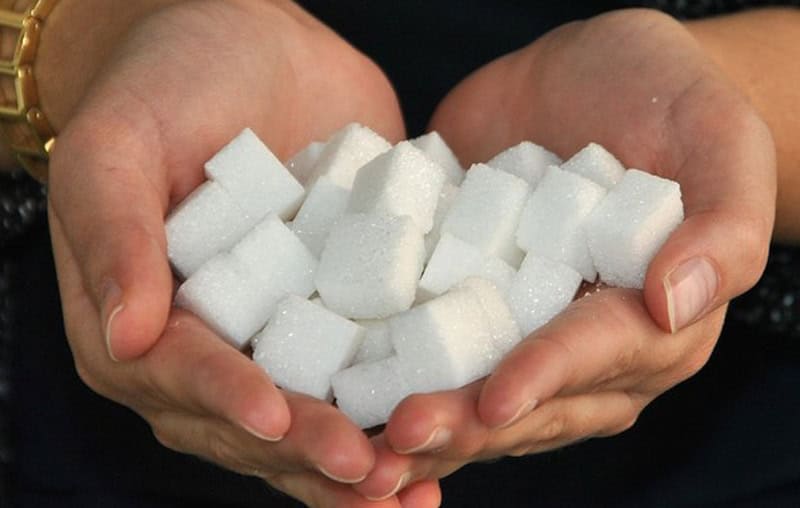The farming methods for beet sugar vs cane sugar contribute to differences in processing efficiency.
Exploring the Distinctions being used and Advantages Between Beet Sugar Vs Cane Sugar
In the culinary globe, the option in between beet sugar and cane sugar is not just regarding sweet taste but entails a nuanced consideration of flavor, application, and influence. While both sugars stem from various plants, each goes through distinct manufacturing procedures that subtly influence their attributes and viability for different dishes.
Beginnings and Production Processes of Beet and Cane Sugar

Walking cane sugar, on the various other hand, comes from the sugarcane plant, a tropical lawn native to Southeast Asia however currently cultivated in exotic areas worldwide - beet sugar vs cane sugar. The manufacturing of cane sugar starts with the harvesting of cane stalks, which are crushed to release the juice.

Nutritional Content and Health And Wellness Considerations

When contrasting the dietary material of beet sugar and cane sugar, it comes to be evident that both types essentially give the same caloric worths, with about 16 calories per teaspoon and no substantial nutrient variety. Both sugars, when eaten in excess, can add to elevated blood sugar degrees, a risk factor for diabetic issues and various other metabolic problems. From a health and wellness perspective, moderating consumption of any kind of type of sugar, whether from beet or cane, is recommended to avoid these potential adverse effects on well-being.
Taste Profiles and Culinary Applications
In spite of their similar chemical structures, beet sugar and cane sugar differ subtly in flavor, which can influence their use in various cooking contexts. Cane sugar frequently carries a hint of molasses, also in its polished form, offering a cozy, caramel-like undertone that enhances baked items, coffee, and chocolate-based recipes. This small molasses flavor is specifically valued in the baking industry for adding depth to sugary foods and pastries. On the various other hand, beet sugar is defined by its very fine-tuned, neutral preference, making it a functional sugar that does not modify the flavor profiles of meals. This neutrality is particularly useful in delicate dishes, such as light breads, lotions, and some sauces, where the integral tastes of various other active ingredients are intended to stand apart. As a result, chefs and food makers might pick one kind of sugar over the other based on the wanted taste result of their culinary productions.
Ecological Impact and Sustainability
While both beet and cane sugars are stemmed from plants, their environmental effects vary substantially due to the unique techniques of growing and processing required for each. Sugar beet cultivation frequently includes comprehensive mechanization, which can enhance nonrenewable fuel source usage and carbon discharges. Nevertheless, beets can be expanded in cooler environments and need less irrigation, possibly lowering water use compared to sugarcane. Sugarcane, on the various other hand, is commonly grown in tropical regions where it counts heavily on watering and a longer growing duration, boosting its water impact.
Furthermore, the processing of sugarcane look at here now commonly creates a substantial amount of waste, including bagasse, which, although functional as biofuel, frequently contributes to air contamination if melted inefficiently. Sugar beet processing makes use of even more of the raw materials, leading to less waste. Both markets deal with challenges in decreasing Look At This their ecological footprints, yet continuous technologies in farming techniques and waste administration are intending to enhance sustainability.
Economic Aspects Influencing the Sugar Sector
The financial dynamics of the sugar industry are significantly affected by global market demands and profession plans. Aspects such as tolls, aids, and worldwide profession contracts play vital duties fit the affordable landscape. In regions where sugarcane or sugar beet manufacturing is subsidized, manufacturers may have an economic advantage that enables them to supply reduced rates on the international market. This can produce differences in profitability and market access for producers in nations without such subsidies.
Additionally, variations in international need for sugar, influenced by dietary fads and commercial usage in food, directly effect costs and manufacturing levels. beet sugar vs cane sugar. Climate conditions also play an essential role, as they can considerably influence crop yields and, as a result, the supply chain. This variability presents a level of financial unpredictability that can bring about financial investment volatility in sugar production fields, affecting decisions from growing to market technique
Final Thought
To conclude, both beet and cane sugar have More about the author special qualities that fit various cooking requirements. While cane sugar imparts an abundant taste suitable for enhancing baked items, beet sugar's nonpartisanship is perfect for lighter meals. Nutritional resemblances regardless of, their distinctive manufacturing processes and environmental effects add intricacy to the selection between them. Hence, recognizing these distinctions assists chefs and consumers make educated decisions that align with their health, culinary, and honest preferences.